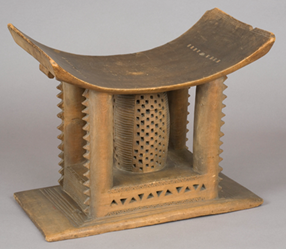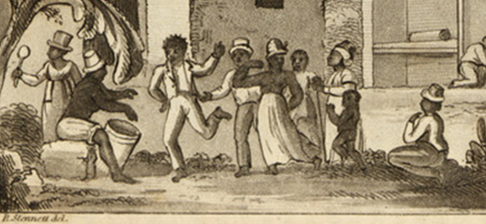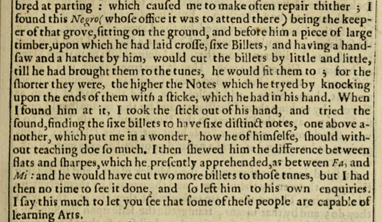1/ I have done some source work this week with Y8 on how Akan culture survived in Barbados as part of our enquiry comparing the impact of transatlantic slavery on Ghana, Barbados and Britain. I am far from an expert on this but thought others might find some of this useful. https://twitter.com/hannahcusworth/status/1359591669482598403
2/ This is an Akan stool from Accra in the collections of Bristol Museum. Hewn from a single block of wood, this is a mmaa dwa or woman’s stool. Stools like these are central to Akan culture as symbols of family and power – the famous golden stool of Asante is another example.
3/ This Harvard thesis on Akan stools is fascinating! https://dash.harvard.edu/bitstream/handle/1/11004913/Hale_gsas.harvard_0084L_11004.pdf?sequence=3&isAllowed=y
4/ Cut to 17th century Barbados, where a large proportion of the enslaved population was of Akan origin. In 1675, a rebellion was supposedly thwarted, in which the plan was to install an Akan ruler named Kofi as king on an ‘exquisitely wrought Stool, Carved after their Mode’.
5/ The English on Barbados lived in terror of resistance from the people they had enslaved, and responded with extreme violence. There was a fear that the rebellion had been organised using musical instruments, including drums and ‘trumpets made of Gourdes’.
6/ It is unclear whether this fear was based on reality, but the concept of the ‘talking drum’, used to communicate complex messages, exists across West Africa – here is a recording made in Accra.
7/ A law of 1688 subsequently banned ‘the using and keeping of drums, horns and other instruments’ by enslaved people on Barbados. However, this law seems to have been roundly ignored, as every visitor to have written an account comments on the music they encountered.
8/ On the subject of music, in this account of his visit to Barbados in the 1650s, Richard Ligon seems to be describing a wooden xylophone (Ligon’s patronising attitude towards Africans and African music comes across strongly in this extract).
9/ Similar instruments exist in Ghana today…
10/ Frederic Bayliss, a visitor in the in the 1820s, complained of being kept awake by people outside his window ‘during the greater part of the moonlit night, chattering together and telling “nancy stories”... more or less a tale of ghosts or goblins’.
11/ This is of course a reference to the Akan folktale character of Anansi the spider: https://en.wikipedia.org/wiki/Anansi
12/ Griffith Hughes, a Welsh minister who tried and failed to introduce Christianity in the 1730s, complained that the enslaved people he encountered ‘are very tenaciously addicted to the Rites, Ceremonies and Superstitions of their own Countries…’
13/ ‘…particularly in their Plays, Dances, Music, Marriages and Burials. And even such as are born and bred up here, cannot be intirely [sic] weaned from these Customs’.
14/ I think getting the kids to look at the way Akan culture survived and evolved in Barbados is a really important part of the enquiry, alongside the horrors of the plantation and the Barbados Slave Code: a powerful story of resilience and resistance.

 Read on Twitter
Read on Twitter




